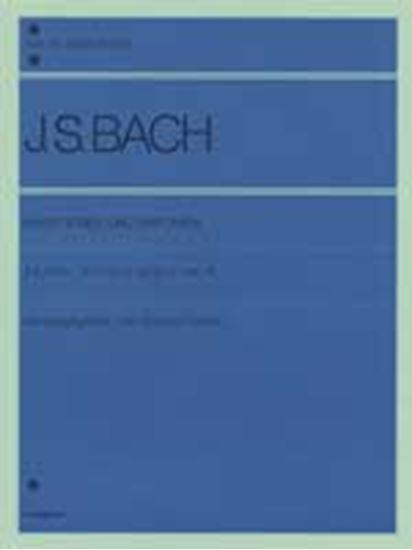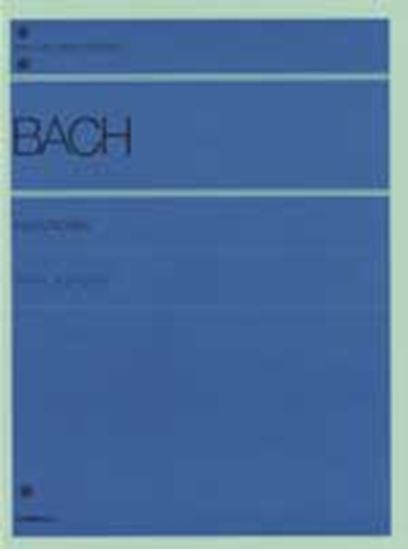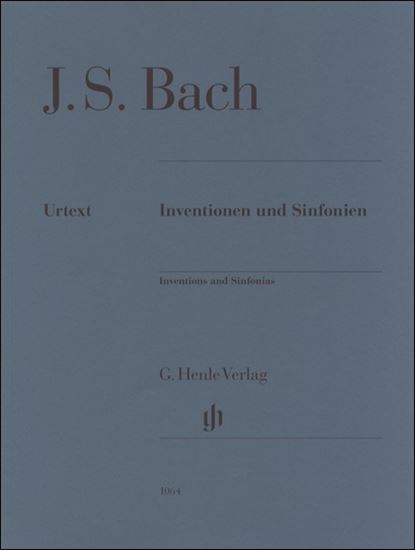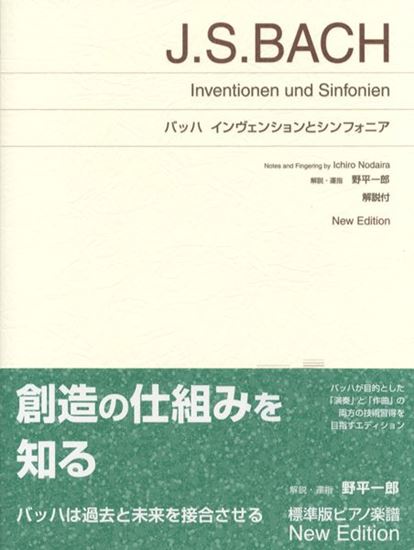Bach, Johann Sebastian : Sinfonia Nr.8 F-Dur BWV 794
Work Overview
Genre:pieces
Total Playing Time:1 min 00 sec
Copyright:Public Domain
Commentary (3)
Author : Takamatsu, Yusuke
Last Updated: September 18, 2020
[Open]
Author : Takamatsu, Yusuke
F major, 4/4 time.
Sinfonia No. 8, centrally located among the 15 Sinfonias, possesses a character contrasting with the preceding and following pieces. Despite its lively character, it is notably constructed with strict counterpoint. It consists of four subject expositions and three episodes.
The concise one-measure subject presented at the beginning is introduced in the order of middle voice, upper voice, and lower voice, and, after the first episode (measures 4-5) which uses the opening motive of the subject, it is exceptionally re-presented in the dominant key (measures 5-7). In the latter half of measure 7, the middle voice rests, signaling the start of a new second exposition. Here, the upper and lower voices first modulate through sequential progression while forming a stretto (from measure 7), and the resting middle voice then joins in G minor, developing the material (from measure 11). Following a relatively short second episode (measures 15-17), the third exposition (measures 17-19), and the third episode (measures 19-20), the subject returns in the tonic key in the lower and upper voices in measure 21, concluding the piece.
Author : Hayashikawa, Takashi
Last Updated: March 15, 2018
[Open]
Author : Hayashikawa, Takashi
Musical examples provided by: Bärenreiter Verlag
Author : Ooi, Kazurou
Last Updated: March 12, 2018
[Open]
Author : Ooi, Kazurou
Sinfonia No. 8 in F major
This Sinfonia is written in F major, a key with a particularly strong character even among Bach's works. It possesses a dynamic and bright character. However, this Sinfonia is somewhat different from others. This is because it has an unusually large number of themes compared to other Sinfonias. The themes are written in a particularly elusive manner, making them easy to overlook.
First, let's begin with a discussion of where the theme starts and ends. Some might argue that the theme extends from the off-beat of beat 1 in measure 1 (alto) to the on-beat of beat 1 in measure 3 (C). If we assume this, the theme appearing in the off-beat of beat 1 in measure 2 (soprano) would also be the same theme, but the bass theme would never appear. Therefore, we assume the theme extends from the off-beat of beat 1 in measure 1 (alto C) to the on-beat of beat 1 in measure 2 (A). When this assumption is made, the number of themes becomes unusually large.
Let's list them all:
- Measure 1: From the off-beat of beat 1 (alto C)
- Measure 2: From the off-beat of beat 1 (soprano F)
- Measure 3: From the off-beat of beat 1 (bass C)
- Measure 4: Ascending sequence
- Measure 5: From the off-beat of beat 3 (bass G)
- Measure 6: From the off-beat of beat 3 (alto G)
- Measure 7: From the off-beat of beat 3 (soprano G); From the off-beat of beat 4 (bass C)
- Measure 8: From the off-beat of beat 3 (soprano G); From the off-beat of beat 4 (bass A)
- Measure 9: From the off-beat of beat 3 (soprano A); From the off-beat of beat 4 (bass D)
- Measure 10: From the off-beat of beat 3 (alto D)
- Measure 11: From the off-beat of beat 3 (bass D)
- Measure 12: From the off-beat of beat 3 (bass G)
- Measure 13: From the off-beat of beat 3 (soprano A)
- Measures 14-17: Episode
- Measure 17: From the off-beat of beat 3 (soprano D); From the off-beat of beat 3 (alto F)
- Measure 18: From the off-beat of beat 3 (soprano F); From the off-beat of beat 4 (bass B)
- Measures 19-20: Ascending sequence
- Measure 21: From the off-beat of beat 1 (bass C)
- Measure 22: From the off-beat of beat 1 (soprano C)
Incidentally, when compared to Sinfonia No. 3, which also proceeds at a fast tempo, only seven complete themes appear. In contrast, this No. 8 features 21 themes, which is three times as many.
Performers should grasp these themes, be aware of their locations, and articulate them more distinctly than other voices. Additionally, this Sinfonia contains many stretto sections (where themes overlap). For example, in measure 7, the soprano and bass themes are in stretto. The key in such cases is not to emphasize one voice over another, but to bring out the new theme immediately as it enters after the initial theme begins. By doing so, you can make the overlapping of themes audible.
The tonality of each theme also changes rapidly. Let's change the atmosphere accordingly.
PTNA & Partner Channel Videos(2items)
Sheet MusicView More
Scores List (42)

カワイ出版

(株)ヤマハミュージックエンタテインメントホールディングス

(株)全音楽譜出版社

(株)全音楽譜出版社

(株)ドレミ楽譜出版社

(株)音楽之友社

(株)全音楽譜出版社

(株)音楽之友社

(株)音楽之友社

(株)ドレミ楽譜出版社

(株)ドレミ楽譜出版社

(株)ドレミ楽譜出版社

(株)ドレミ楽譜出版社

ヘンレー

ヘンレー

カワイ出版

(株)渓水社

(株)音楽之友社

(株)全音楽譜出版社

(株)エー・ティ・エヌ

(株)全音楽譜出版社

カワイ出版

(株)音楽之友社

(株)音楽之友社

ヘンレー

ヘンレー

(株)学研プラス

















